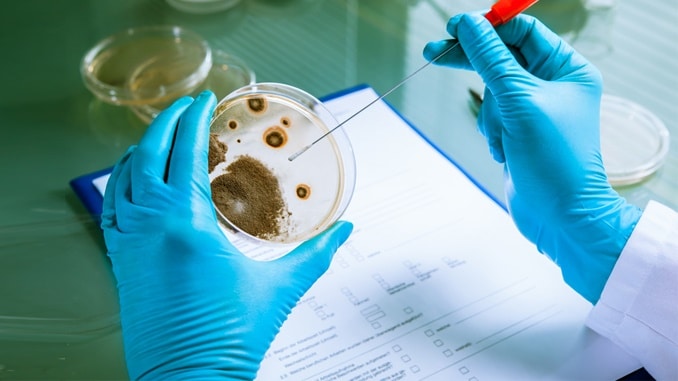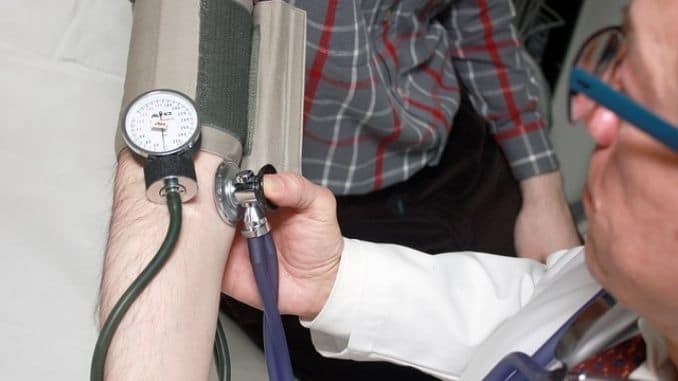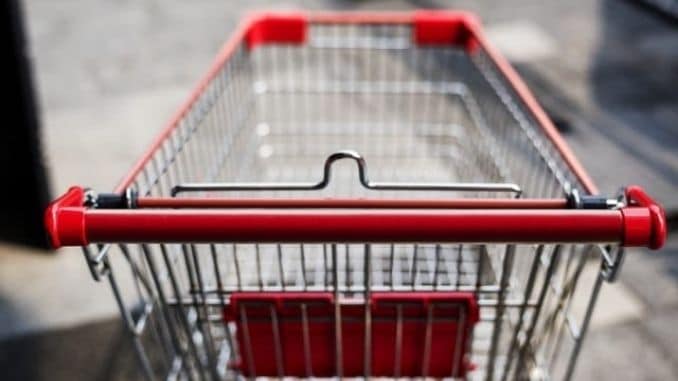
Last year’s flu season (2017-2018) was one of the most severe in the last decade, with high rates occurring all across the country. The flu killed about 80,000 people and hospitalized more than any seasonal flu in decades.
How might this season go in comparison to the last one? It’s unclear so far but, in the meantime, it’s important to do all you can to stay well. In addition to getting your flu shot and keeping your immune system strong, you can also reduce your risk of getting sick this season by avoiding the following five germ hot spots. These are places where dangerous germs are likely to lurk, and that can make you sick easily if you’re not careful.
1. Avoid Germs in the Doctor’s Office
When you go to the see the doctor, the last thing you want to do is get sicker than you already are or spread sickness to your other family members. Recent studies have found, however, that some of the dangerous bacteria that exist in hospitals now exist in some doctor’s offices too.
Follow these recommendations to avoid picking up more germs you don’t need:
- Take your own pen: That pen at the sign-up counter has been touched by a number of hands, and who knows where those hands have been? Test swabs show that the average writing implement contains more germs than door handles or waiting room chairs. Use your own.
- Take your own magazines: Magazines on the coffee table in the waiting room are also full of germs from a number of hands. Take your own reading material.
- Toys: Children’s toys can help keep children quiet at the doctor’s office, but they’re also hotbeds for germs, particularly since children tend to put toys in their mouths. If you’re taking children, take your own toys for them to play with.
- Sit away from visibly sick people: If someone is coughing or sneezing, try to set a good distance away from that person. Airborne droplets can stick around for hours and can transfer to you easily.
2. Avoid Germs at the Grocery Store
The grocery store is another place where germs like to live. Take the following precautions when you go shopping so that you don’t inadvertently take germs home along with your cheese and chicken:
- Shopping cart handles: Tests have found that 72 percent of all shopping cart handles test positive for fecal bacteria. Another 50 percent tested positive for E. coli. Another study found that grocery store shopping carts had 270 times more bacteria than a toilet handle. Take antibacterial wipes with you, use those supplied by the store or wear gloves.
- Shopping cart child seat: Think about what small children leave behind, and you can imagine the germs on these. Wipe them down before using them.
- Refrigerator doors: These are also touched by many hands. The average cellphone surface has 27 colonies of bacteria per square inch. Refrigerator doors, by comparison, have more than 33,000 bacteria colonies. Wear gloves or take wipes or towels with you to protect your hands.
- Produce That fresh produce that looks so healthy tested positive for more bacteria than the bottom of your dog’s food bowl. Choose items that are not torn or cut, and make sure you wash them well before eating.
3. Avoid Germs When Eating Out
You go out to relax and catch a break from cooking, but you have to be careful that you don’t go home with something more than you paid for. Watch out for these germ hot spots at your favorite restaurant:
- Menus: It makes sense when you think about it. These menus are handled by just about everyone that comes into the restaurant, including staff members, but they’re rarely if ever washed. Some may be wiped down, but usually with an old cloth rather than an antibacterial wipe. In particular, plastic menus hold onto germs, so use gloves or wipe down before handling.
- Lemons: It may be nice to enjoy a bit of lemon in your water, but when you’re eating out, stick to straight up water. Those lemons are precut and then sit out in the air, sometimes for hours, before they are put into your water. They can harbor millions of bacteria because of improper storage and handling.
- High chairs and booster seats: Again, these are handled by a large number of people, and then babies sit in them, which means drool and other bodily fluids likely escaped onto the surfaces. Unfortunately, these are rarely wiped down, so take your own wipes along with you.
- Utensils: Those that are wrapped up in napkins stand a better chance of having fewer germs than those left out on the table uncovered. Those that are put into bins are most likely to have germs as one person after the other reaches in to grab handfuls of utensils, which can infect many they leave behind. Take your own or go to places that wrap theirs up. Then, make sure to keep a napkin between your silverware and the table at all times.
- Salt and pepper shakers: Everyone handles them, and few are ever washed. Either use gloves or take your own salt and pepper packets with you.
- Tabletops: Yes, staff members may wash these off with a wet cloth, but they are rarely disinfected. Often, the sponges or cloths used to wipe the tables down are not sanitized. Use an antibacterial wipe or make sure not to touch the table with your hands and to keep utensils from doing so as well. If you have a paper placemat, use that.
- Rims of glasses: Many waitstaff carries glasses at the top, right where customers drink. Request a straw or, if your waiter does this on the way to your table, ask for a clean cup, and ask for them to carry it properly.
4. Avoid Germs on Airplanes
If you’re traveling by plane, your chances of catching germs are even higher than in other circumstances because the air is circulated constantly, and you’re essentially trapped in a tube with a large number of other people. Take these precautions to protect yourself:
- Tray tables: According to a 2015 study by TravelMath, tray table surfaces had more than eight times the bacteria as lavatory flush buttons. Possible germs include cold viruses, flu viruses, norovirus, and the superbug MSRA. These are rarely cleaned and, when they are, disinfectant is not usually used. Wipe them down with an antibacterial wipe before using, and then keep all your food and utensils on a napkin or towel. You can also avoid using them at all.
- Seatbelt buckles: Many hands touch them, and they’re rarely cleaned. Bring a bottle of hand sanitizer with you, and use it after fastening your seatbelt.
- Air vents: These are touched even more than seatbelts — again, use your hand sanitizer.
- Restrooms: Here you have to be careful of the flush handles, sink handles and toilet seats. Wash your hands thoroughly when you’re done, then use a towel on the door handle on your way out.
- Seatback pocket: People use these to stash trash, dirty tissues and even used diapers. One study found that MRSA germs could survive for up to seven days on seat pocket cloth. Just avoid using them.
- Aisle seats: People touch the tops of these as they pass by for support, which means they’re likely to have more germs than other seats. Avoid touching the tops of these seats yourself, and if you want to sleep, put something underneath your head between you and the seat. You may also want to consider other seats — one study found that people sitting in the aisle were more likely to contract viruses on the plane than those in window seats.
5. Avoid Germs at the Office
You go to work every day, which means you may be exposed to germs at the office more than any other place. Workplace hygiene is not always the best, either. Watch out for these dangerous germy places.
- The phone: Studies show that the average phone is the most contaminated item in the office, usually more contaminated than toilet seats. If you share a desk or phone, you could be infected by others’ germs. Wipe down the handset and/or wash your hands after using the phone. Remember that cellphones also pick up a number of germs as you carry them here and there. Regularly wipe them down with antibacterial wipes to keep them clean.
- The keyboard: Whatever you’ve touched during the day, you can then deposit that onto your keyboard when you use it. Studies have shown that keyboards harbor germs, yet we rarely clean them. Swab yours down with a disinfectant every day, particularly if you share it with someone else. Same goes for your mouse.
- Elevator buttons and escalator railings: If you have either of these in your office (or elsewhere, for that matter), beware of germs. Everyone touches them and they’re rarely cleaned. Wear gloves or make sure to wash your hands once you get where you’re going. You can also take hand sanitizer with you.
- Break room sink faucet handles and more: If your office has a break room, keep in mind that many hands are touching the sink handles, refrigerator handles and microwave handles. Use caution.
- Pens: As in the doctor’s office, these can gather germs as they go from place to place and person to person. Remember that some people put pens in their mouths. Use only your own pens and wipe them down frequently.
- Coffee mugs: Office mugs, particularly if there is no dishwasher, can harbor germs and even mold. Use only your own cup and wash it with hot water and soap each night.
- Photocopier: If many people in the office use this, it will also have germs on the buttons and surfaces. Keep your hands clean and use sanitizer gel when needed.
- Your desk: The surface of your desk, believe it or not, can harbor millions of germs. Wipe it down at least twice a week with an antibacterial wipe or vinegar solution.
For your guide to the best foods to heal your body, check out The Best Foods that Rapidly Slim & Heal in 7 Days, here!






